Let me start by quoting a statement from Drew Lyon’s blog post on April 29, 2020 titled ‘Fluroxypyr is Everywhere!’, in which he concluded that “In the PNW, kochia is not the widespread problem it is in the Great Plains, so many of these herbicide combinations make even less sense here in Eastern Washington”. That statement may be true for eastern Washington, but in the Treasure Valley of eastern Oregon and southwestern Idaho, kochia is widely distributed with populations rivaling those in the Great Plains. In the Treasure Valley, kochia is found alongside the roads, fence lines, crevices on concrete blocks/bridges, and of course in crop fields (Figure 1). Kochia is drought tolerant due in part to roots that can extend up to 15 feet in the soil and 22 feet wide, which helps it to flourish in this dry environment. Kochia has a very high genetic diversity, which is maintained through substantial gene flow aided by cross pollination and seed dispersal over a long distance.
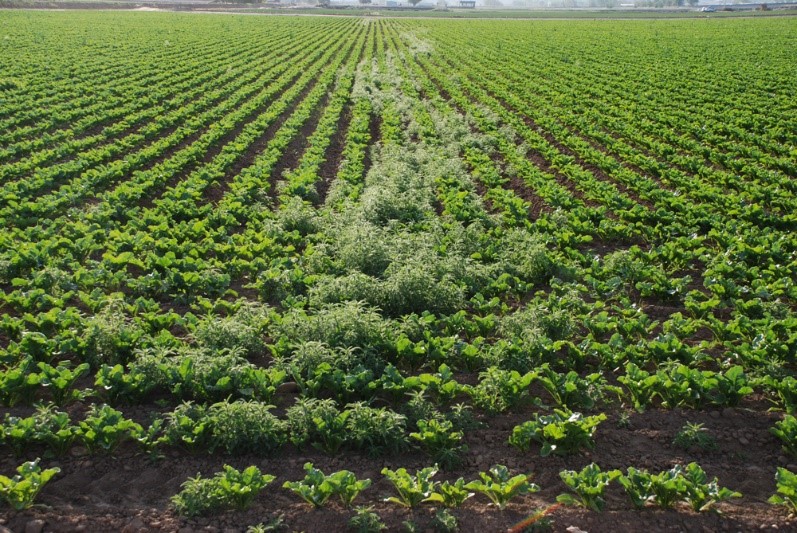
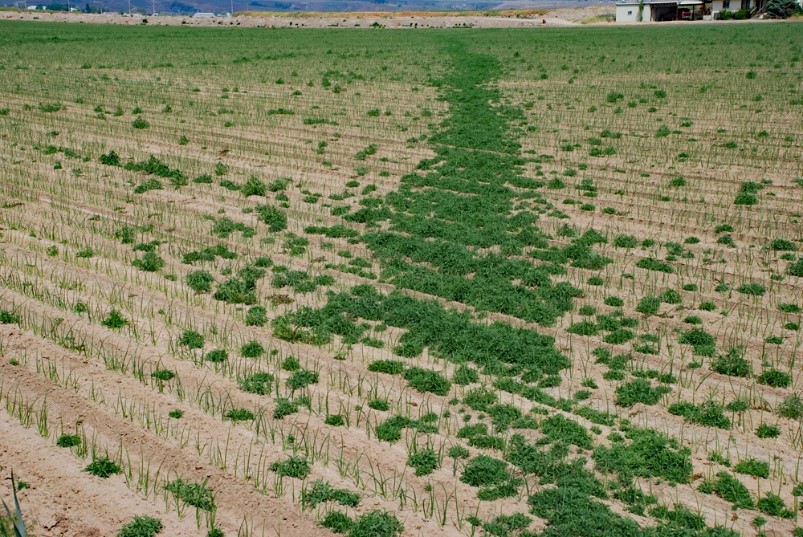
Figure 1. Glyphosate resistant kochia in sugar beets (left) and a kochia trail in an onion field (right). Photo courtesy of Joel Felix, Oregon State University.
The Treasure Valley has had ALS herbicide resistant kochia populations for decades and resistance to glyphosate was confirmed in 2014. So, kochia management in glyphosate resistant corn, alfalfa, and sugar beet has increasingly become a problem. Land preparation in the Treasure Valley begins the previous fall when fields are plowed and mound-beds formed. This is intended to conserve moisture so when the beds are harrowed starting mid-March, the seeds can be planted in moist soil to allow seedlings to emerge before irrigation water is available. Kochia is among the earliest weeds to emerge, normally in late February to early March. So, growers spray glyphosate-containing products to control the early cohorts before crops emerge. Onion, which is a predominant crop in the valley, is sprayed with Brox 2EC (bromoxynil) tankmixed with GoalTender (oxyfluorfen) when seedlings attain the 2-leaf stage (Figure 2a) followed by a sequential application when plants are between the 6 and 10-leaf stage. This works well, but mid-season hand weeding is always required.
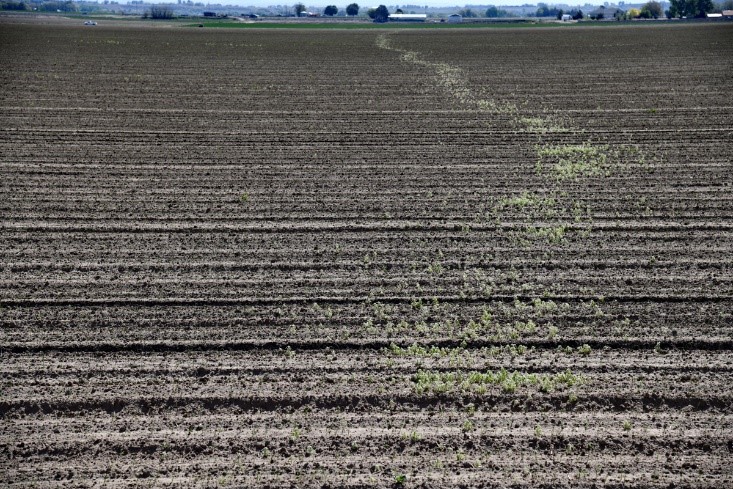
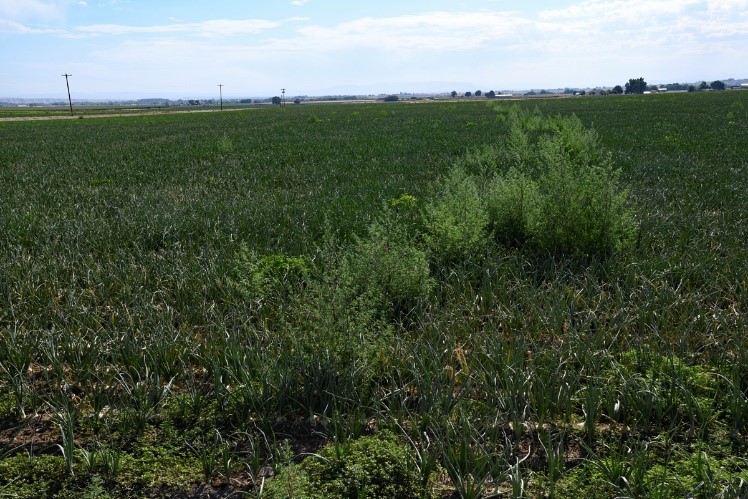
Figure 2. Kochia trail in an onion field after spraying Bromoxynil early May (a) and a late season kochia trail in August (b). Photo credit by Joel Felix, Oregon State University.
Recently, we have noticed kochia trails reappear in late August (Figure 2b; notice the landmarks at the far end of the picture indicating same area as that sprayed in May) in fields that were sprayed with bromoxynil in early May through early June followed by hand-weeding. The literature indicates that 99% of the seeds emerge in the year following their production. Field operations before seeding followed by herbicides applied prior to crop emergence tend to eliminate the greatest proportion of the seedbank. Is kochia emergence pattern changing? Could we be in the early stages of selecting bromoxynil-resistant kochia biotypes or is it a poor hand-weeding job in which a crew skips plants that continue growing and become noticeable towards the end of the season? Additionally, herbicide combinations mentioned in Drew Lyon’s blog post likely are used in some winter wheat production fields in the Treasure Valley. We have started seeing late season kochia trails in wheat fields, albeit at a much lower frequency. Could it be that kochia plants are being injured by spring applied herbicides applied in winter wheat field but remain alive under the canopy until irrigation water is cut off in preparation for harvest when they start growing? It may be time to initiate studies on kochia emergence periodicity and possibly herbicide response to some of the products heavily used in onion and wheat in the Treasure Valley of eastern Oregon and southwestern Idaho.
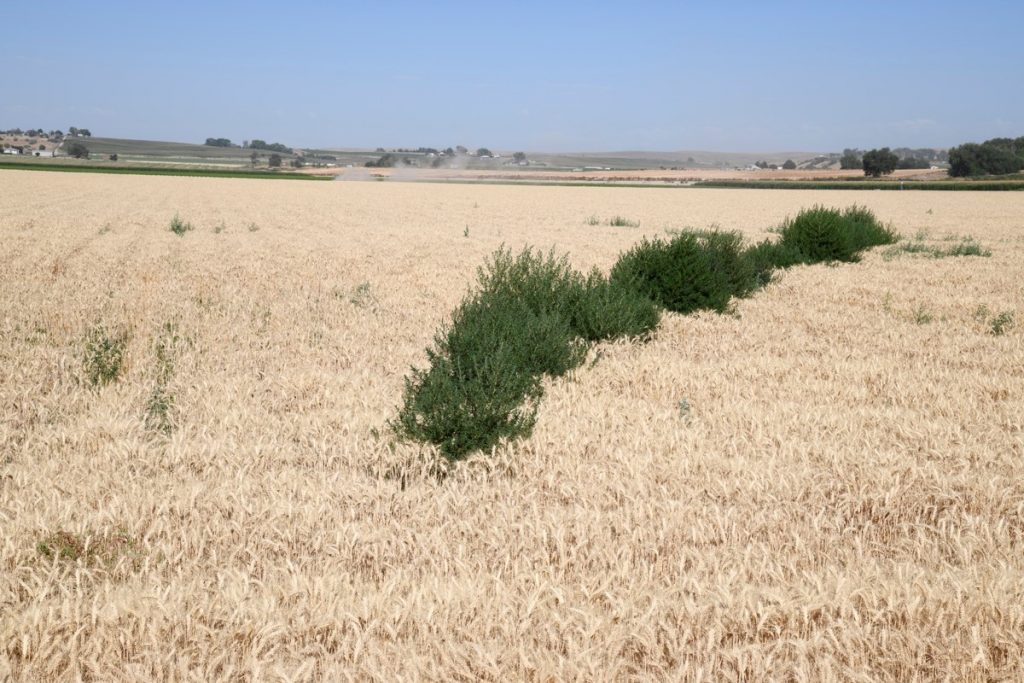
Figure 3. Kochia trail in winter wheat just before harvest. Photo credit to Joel Felix, Oregon State University.